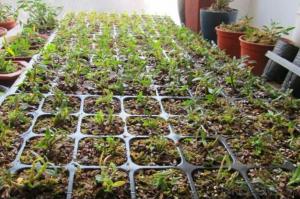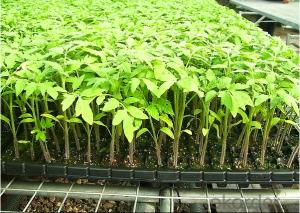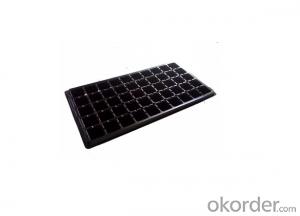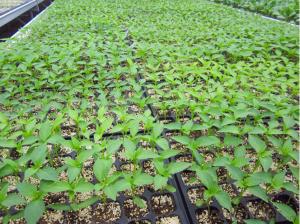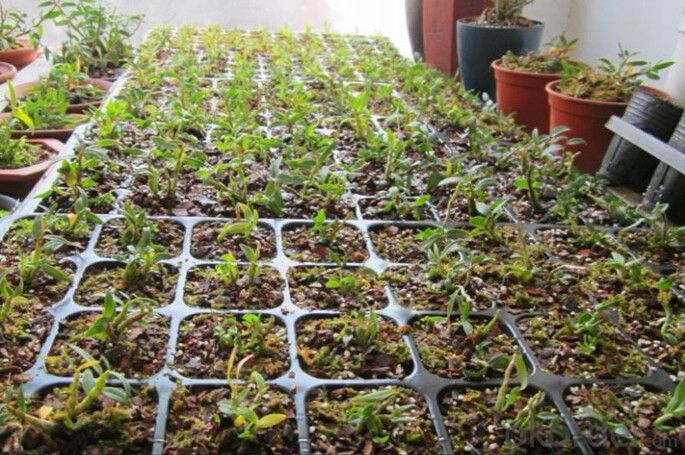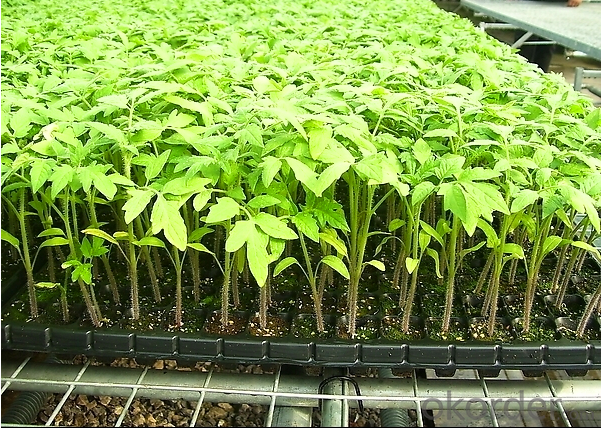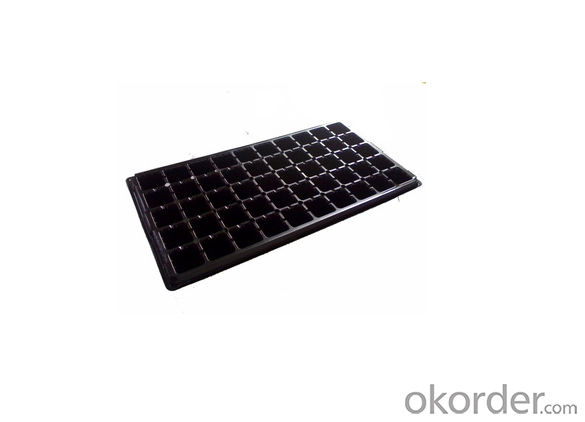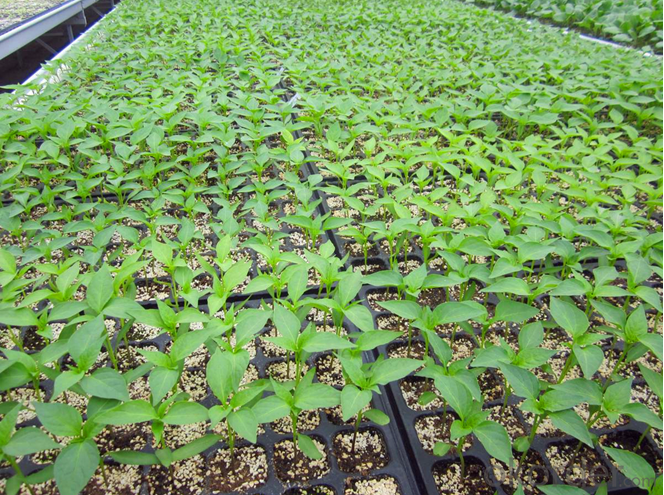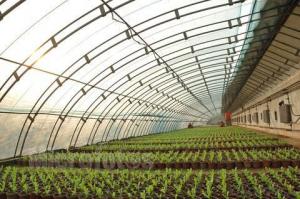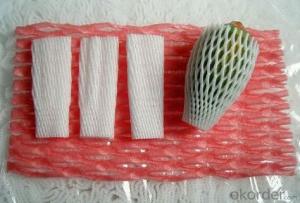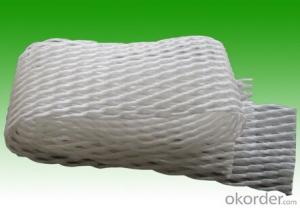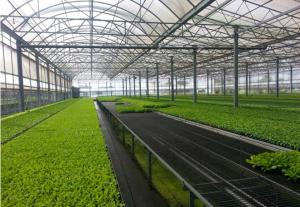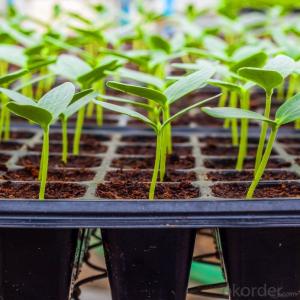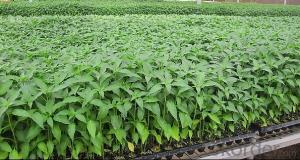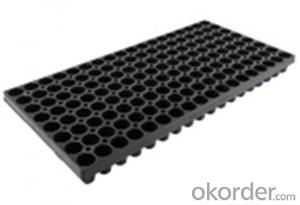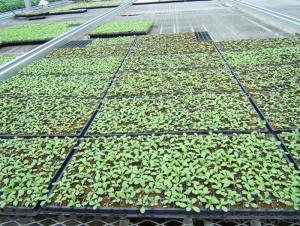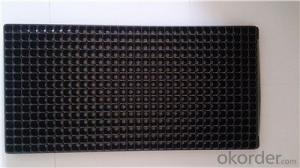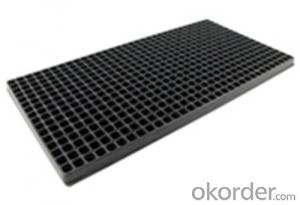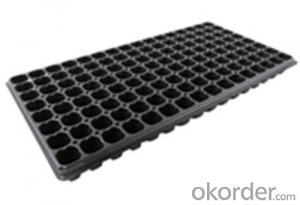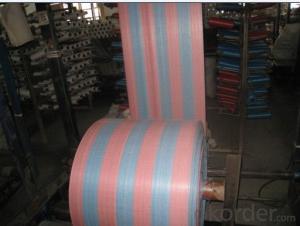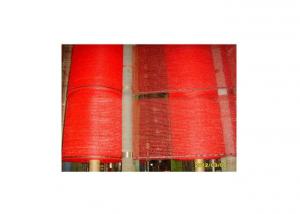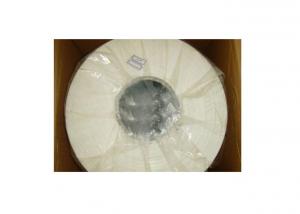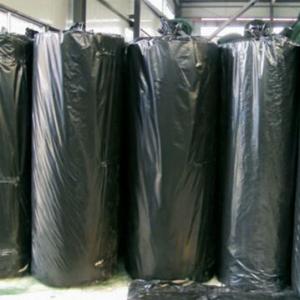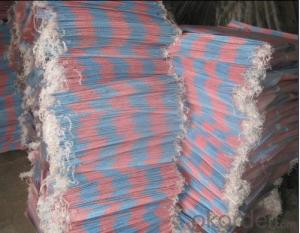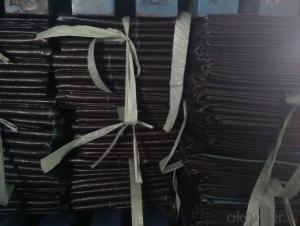Deep Black Plastic Seedling Tray Seed Germination Tray Nursery Plug Trays
- Loading Port:
- China main port
- Payment Terms:
- TT OR LC
- Min Order Qty:
- 3000 pc
- Supply Capability:
- 2000000 pc/month
OKorder Service Pledge
OKorder Financial Service
You Might Also Like
Specification of Plug Trays HIPS Made Plastic Plug Tray for Greenhouse (Growing and Seedling):
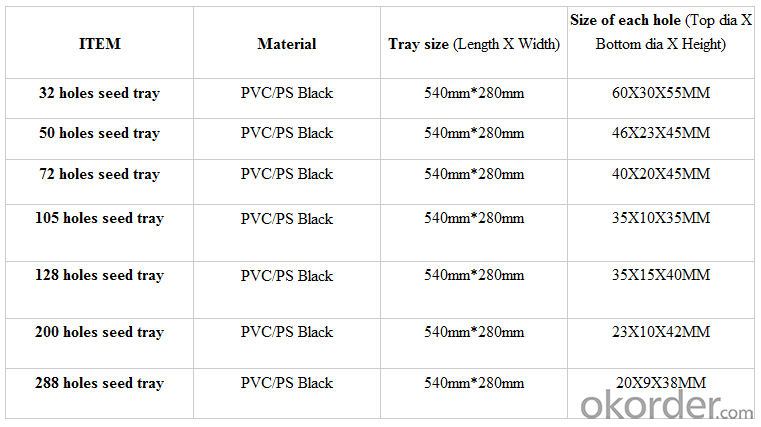
Features of Plug Trays HIPS Made Plastic Plug Tray for Greenhouse (Growing and Seedling):
· Material: HIPS
· Thickness: 0.5mm-1.5mm, Standard:1mm
· Weight: 80g(±5)g-230g(±5)g, Standard weight:155g(±5)g
· Size: length:490mm-540mm, width:190mm-345mm,depth:25mm-150mm
· Standard:540mmX280mm
· Cell count: 18-512
· Package: In Carton
· Warrenty: 8-10 times
Packaging & Delivery
Packing Detail: export standard carton or large bags
Delivery time: 4 million per momth after receipt of deposit
Advantage:
Waterproof, UV-resistant, extrusion-resistant
Easy carry for young seeding plant and grow
Service:
1. Quick, efficient and professional response within 24 hours, 14 hours online services
2. 10 years manufacturing and exporting experience in agriculture field.
3. Technical support and solution by chief engineer.
4. Strict quality control system & team, high reputation in the market.
5. Full range of irrigation products for choice
6. OEM/ODM services
7. Accept sample order before Mass Order
Picture of Plug Trays HIPS Made Plastic Plug Tray for Greenhouse (Growing and Seedling):
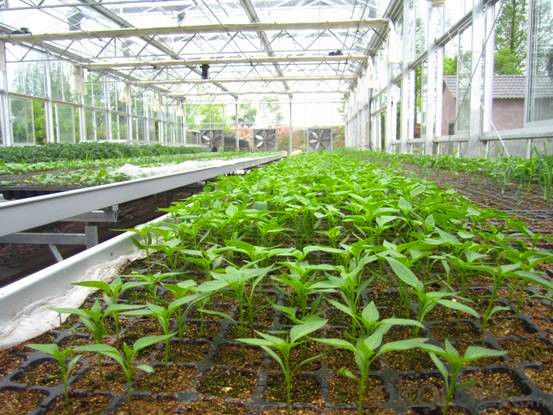
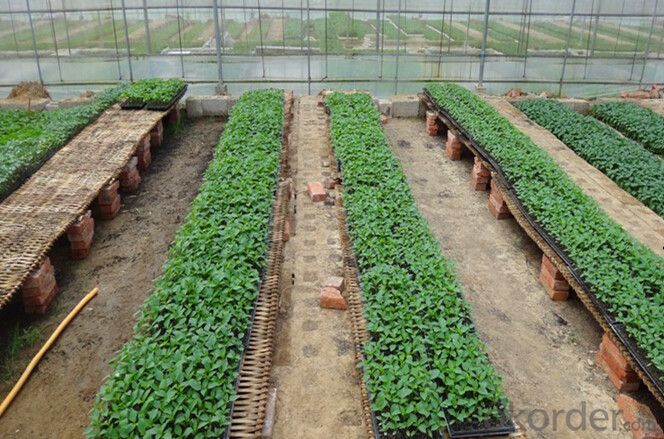
FAQ of Plug Trays HIPS Made Plastic Plug Tray for Greenhouse (Growing and Seedling):
Q: 1.How long is the production time?
A: Usually one to two weeks.
Q: 2.How is the seed tray being packaged?
A: They can be packaged in carton or pallets. Carton size is 1375px*725px*1250px.
Q:3.How many times can the seed tray be used?
A: Under the same environment, it is decided by the thickness. Usually 0.6mm thickness can be used for 1 or 2 times.
1.0 thickness can be used for 3-4 times. 1.5 thickness can be used for 8-10 times.
- Q: Can ground cover be used to create a low-maintenance alternative to a lawn in a small space?
- Yes, ground cover can definitely be used to create a low-maintenance alternative to a lawn in a small space. Ground cover plants such as clover, creeping thyme, or moss require less mowing, watering, and fertilizing compared to traditional grass lawns. They also provide a dense and attractive carpet-like cover that can withstand foot traffic. By choosing the right ground cover species suitable for the local climate and soil conditions, one can create a beautiful, eco-friendly, and low-maintenance lawn substitute in a small area.
- Q: How do I prevent ground cover from smothering tree roots?
- One way to prevent ground cover from smothering tree roots is by creating a mulch ring around the base of the tree. This involves clearing the ground cover in a circle around the tree trunk, leaving a space of about 2-4 feet in diameter. Then, apply a layer of organic mulch, such as wood chips or shredded bark, within the ring. This mulch acts as a barrier, preventing the ground cover from encroaching on the tree's root zone while also retaining moisture and providing nutrients. Regular maintenance, like occasional weeding, is necessary to ensure the ground cover doesn't grow back and invade the mulch ring.
- Q: Can ground cover be used to create a natural privacy screen?
- Yes, ground cover can be used to create a natural privacy screen. Ground cover plants such as shrubs, vines, or tall grasses can grow and spread to form a dense, low-lying barrier that provides privacy. These plants can effectively block the view while adding beauty and greenery to the surrounding area.
- Q: This question asks about the application of agricultural plastic products in farming practices.
- <p>Farmers utilize agricultural plastic products in various ways to enhance their farming operations. These include using plastic mulch films to suppress weeds, retain soil moisture, and regulate soil temperature, which can lead to earlier planting and improved crop yields. Greenhouses made from plastic are used to extend the growing season, protect crops from harsh weather, and create controlled environments for year-round production. Plastic drip irrigation systems conserve water by delivering it directly to plant roots, reducing evaporation and water waste. Plastic containers and trays are also used for seedling cultivation and transplanting, which helps in maintaining uniformity and health of young plants. Overall, agricultural plastics play a crucial role in modern farming by increasing efficiency, productivity, and sustainability.</p>
- Q: What is the best ground cover for a tropical garden?
- One of the best ground covers for a tropical garden is the Asian jasmine (Trachelospermum asiaticum). It is a low-growing, evergreen vine that forms a dense carpet of glossy, dark green foliage. This ground cover is perfect for suppressing weeds, preventing erosion, and adding a lush, tropical look to your garden.
- Q: Are nursery trays suitable for starting butterfly host plants?
- Yes, nursery trays are suitable for starting butterfly host plants. These trays provide a controlled environment for the plants to grow, allowing for better monitoring and care. The trays also help in preventing the spread of diseases and pests. Additionally, nursery trays make it easier to transplant the plants when they are ready for outdoor gardens.
- Q: What are the best ground cover plants for heavy foot traffic areas?
- Some of the best ground cover plants for heavy foot traffic areas include creeping thyme, creeping juniper, and blue star creeper. These plants are low-growing, durable, and can withstand frequent walking without being damaged. They also have dense growth habits, which helps to prevent soil erosion and weed growth.
- Q: there is two groups of plastics. we can group other plastics into these groups. What are the two groups called?
- polymer type, Haldia, Gail, Reliance.
- Q: What are the different types of plastic bags used in horticulture?
- There are several different types of plastic bags commonly used in horticulture, including nursery bags, grow bags, seedling bags, and propagation bags. Each type serves a specific purpose and is designed to provide optimal growing conditions for plants. Nursery bags are typically used for transplanting young plants, while grow bags are larger and often used for growing vegetables or larger plants. Seedling bags are small and usually used for starting seeds, while propagation bags are designed for root cuttings and plant propagation.
- Q: What are the regulations regarding the use of agricultural plastic in various countries?
- <p>Yes, various countries have implemented regulations on the use of agricultural plastic to mitigate environmental impacts. In the European Union, the Directive 94/62/EC regulates the use of plastic materials in contact with food, while the Single-use Plastics Directive aims to reduce pollution. In the United States, the Food and Drug Administration (FDA) oversees the safety of food packaging, including agricultural plastics. China has strict regulations on the production and use of agricultural films, promoting biodegradable alternatives. Other countries may have specific guidelines or bans on certain types of agricultural plastics, reflecting a global trend towards sustainability and environmental protection.</p>
Send your message to us
Deep Black Plastic Seedling Tray Seed Germination Tray Nursery Plug Trays
- Loading Port:
- China main port
- Payment Terms:
- TT OR LC
- Min Order Qty:
- 3000 pc
- Supply Capability:
- 2000000 pc/month
OKorder Service Pledge
OKorder Financial Service
Similar products
Hot products
Hot Searches
Related keywords
